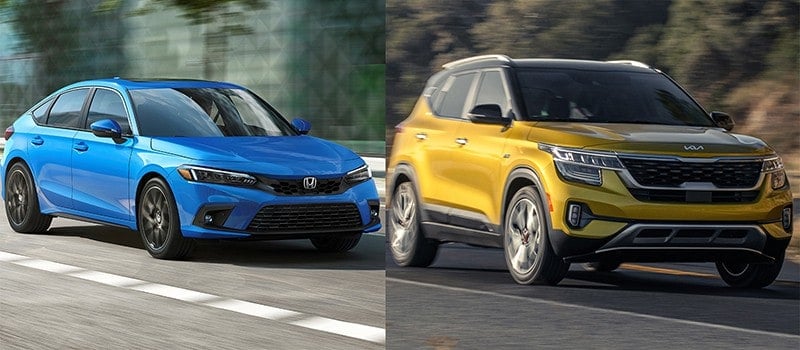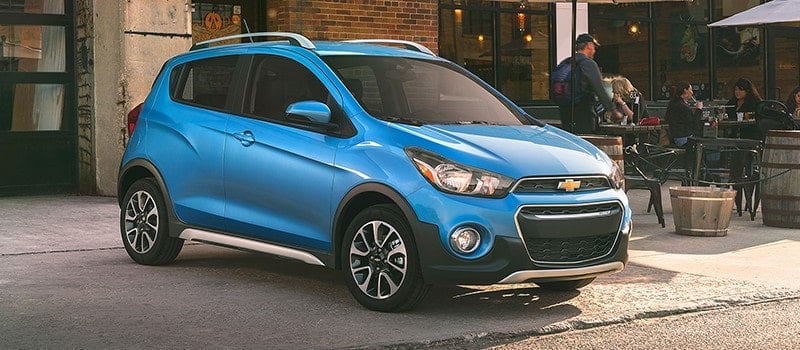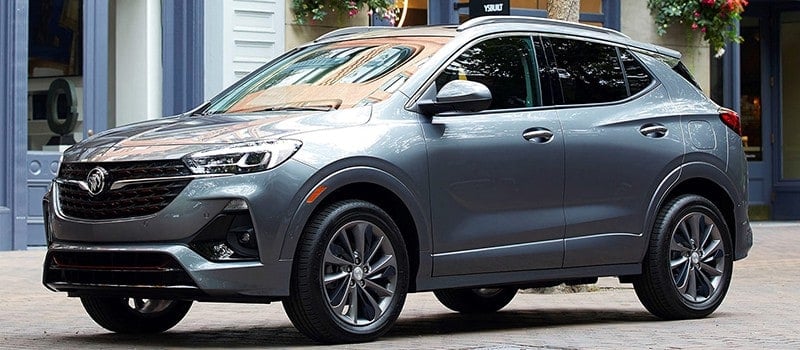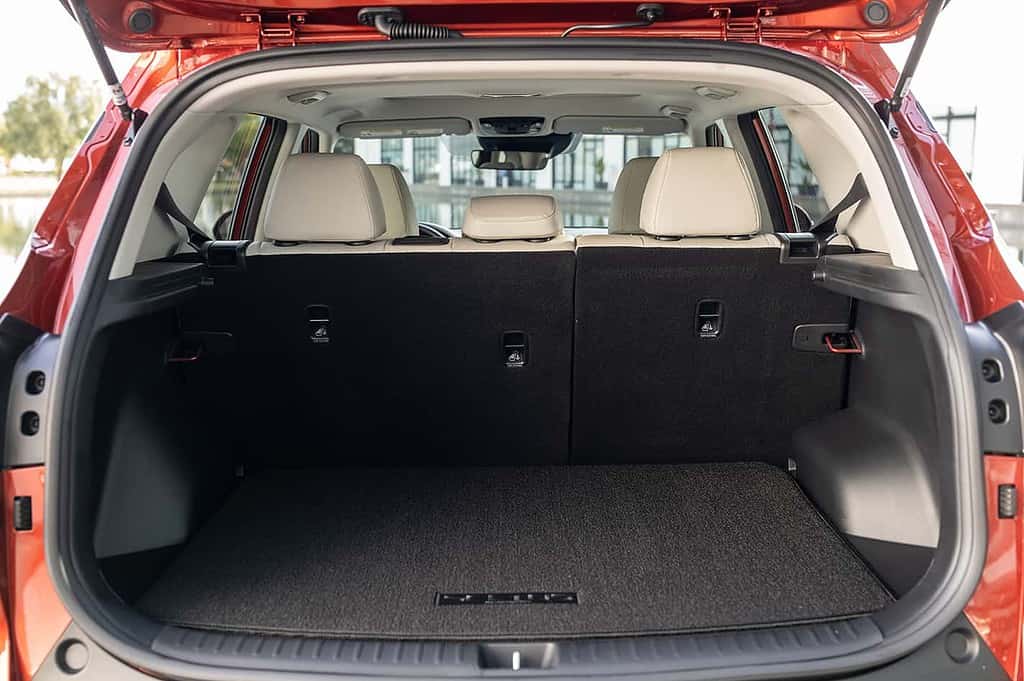What’s the Difference Between an SUV and a Hatchback?
One is the most popular vehicle format of the moment, and the other is a little-loved bodystyle that Americans have never taken to their hearts. At a time of high gas prices, when many people are looking to save money wherever they can, what’s the difference between an SUV and a hatchback, and are you buying the wrong one?

The main difference between an SUV and a hatchback used to be the size, with SUVs being taller, longer, and broader than hatchback cars. However, with more and more compact and subcompact crossover SUVs entering the market and blurring the line between the two, is there still a difference that justifies the higher price and running costs of an SUV?
Definition of a hatchback
A hatchback is a car with a cargo-access door (aka, a hatch) at the rear, typically a liftgate with hinges at the top that’s easy to open upwards and load cargo through. Many hatchbacks also feature a fold-down second-row seat that allows the interior to be reconfigured for prioritizing passenger or cargo volume as required.
A hatch will be classified as a three-door when it doesn’t have doors for the rear-seat passengers to get in and out. That configuration is now relatively rare, so most modern hatchbacks have four doors and a liftback which sees them classified as five-door cars.

Definition of an SUV
SUV stands for Sport Utility Vehicle, a rugged vehicle similar to a station wagon but built on a light-truck chassis. Quite a few larger SUVs still fit that original definition, but the introduction of the crossover SUV has made the old definition much less appropriate.
A crossover SUV looks like a traditional SUV from the outside, but instead of being built on a truck chassis, a crossover is built on a unibody car platform. This construction method makes a crossover lighter, more maneuverable, and more car-like to drive, but it doesn’t deliver the same off-road and towing capacity as a truck-based SUV.
Because crossovers use car platforms, they are usually smaller than a traditional SUV. As the tall-riding SUV body style has become increasingly popular, automakers have produced smaller and smaller crossover SUVs that can sometimes be hard to differentiate from a hatchback.
Because SUVs have rear doors that effectively make them five-door vehicles with a liftback, it’s increasingly difficult to define where the line between hatchback and SUV is now to be drawn.

Even more confusion
The big problem we have these days is people like to be able to define things clearly. Not so long ago, many people used to refer to what we now call an SUV as a 4×4 or a four-wheel drive. Once again, crossovers have thrown that easy definition into disarray as more and more SUVs are now produced in two-wheel and four-wheel-drive formats.
Truck-based SUVs were initially big, tough, rugged vehicles with the immense off-road capability to get you and your passengers where they needed to be regardless of whether there was a road or not. Once these vehicles became popular with the broader public, it soon became apparent that an increasingly large number were being used exclusively in the urban jungle and would never go off-road. No need for off-road capability then presented automakers with the opportunity to produce more affordable two-wheel-drive versions, which started to blur the line between car and SUV.
An SUV, therefore, no longer has to be big, and it doesn’t need the off-road and towing capability delivered by a truck platform. However, the one way you can still tell a hatchback from a compact or subcompact SUV is the height, surely? An SUV is tall, and a hatchback isn’t, right? Well, not exactly……
Can you tell what it is yet?
Even the least informed person will be able to tell you that a Cadillac Escalade, Range Rover, Chevy Suburban, or Ford Expedition is an SUV. They would also probably be able to easily define a Mazda3 Sport, Chevrolet Spark, or Volkswagen Golf as a hatchback.
But what about a Kia Soul, Mazda CX-3, Buick Encore, Chevrolet Trax, or a Ford EcoSport? They’re all classified as subcompact SUVs, but are any of them all that different from a hatchback?
We also have some SUVs that look like a combination of an SUV, a hatchback, and a station wagon. Let’s face it; if you’d never seen a Subaru Outback before, would you immediately see it as an obvious rival to a Honda CR-V, Toyota RAV-5, Hyundai Tucson, or a Kia Sportage?
What advantages does an SUV have over a hatchback?
If you take something like the Buick Encore and compare it to a Mazda3 Sport, can you really see an obvious advantage the Buick has to justify the extra $2,000 it costs over the price of an entry-level Mazda3 Sport?
The Buick may look a little taller than the Mazda, but what use is that extra headroom unless you’re 7-foot tall or you regularly wear an enormous hat at all times?
How about comparing the Ford EcoSport with the Chevrolet Spark? The EcoSport is taller than the Chevy, but it’s also immensely more expensive than the Spark. The cheapest 2022 Ford EcoSport has a starting MSRP of $22,040, but the Spark starts from just $13,600. Even if you go for the highest-spec version of the Chevy Spark, you’ll still only have to find $17,538.
Let’s look at a tale of the tape to see if an SUV is really more spacious than a hatchback of a similar price. Let’s compare the 2022 Honda Civic Hatch with the 2022 Kia Seltos in a table to see how they measure up against each other.
| 2022 Honda Civic LX Hatch | 2022 Kia Seltos SUV | |
|---|---|---|
| MSRP | $23,350 | $22,790 |
| Legroom (front) | 42.3 inches | 41.4 inches |
| Legroom (rear) | 37.4 inches | 38 inches |
| Seats | 5 | 5 |
| Headroom (front) | 39.3 inches | 40 inches |
| Headroom (rear) | 37.1 inches | 38.4 inches |
| Wheelbase | 107.7 inches | 103.5 inches |
| Width (w/o mirrors) | 70.9 inches | 70.9 inches |
| Length | 179 inches | 172 inches |
| Base curb weight | 2,957 lbs | 3,087 lbs |
| Engine | 2.0L I-4 | 2.0L I-4 |
| Horsepower | 138 hp | 132 hp |
| Torque | 158 lb-ft | 146 lb-ft |
| Fuel economy (city/highway/com) | 30/38/33 mpg | 29/35/31 mpg |
| Drivetrain | FWD | FWD |
Running costs
An SUV will almost always cost more money to run than a hatchback of a similar size. And in many cases, the SUV will also have a higher comparative MSRP. You might like that high-riding stance you can enjoy with many SUVs, but do you also like the penalty you’ll pay in fuel efficiency?
In almost every case, a hatchback will deliver superior fuel economy to an SUV you might be shopping it against. And as SUVs are the most desirable type of vehicle on the roads, there’s a good chance the insurance premium will be higher than an equivalent hatch.


Is an SUV better than a hatchback?
If you like the high-riding stance of an SUV and you could no longer live with a car at a standard ride height, then nothing I say here will convince you otherwise. However, if you want to save some money on running costs and even on the purchase price of a new vehicle in some cases, a hatchback can make a lot more sense than an over-priced small SUV.
Hatchbacks have been massively popular in Europe for decades, and they still are immensely popular with buyers outside North America. It’s always baffled me how so many people are prepared to pay over the odds for a subcompact SUV while ignoring hatchbacks. After all, a small compact crossover SUV is basically a tall hatchback with worse fuel economy and performance than an equivalent hatchback.
